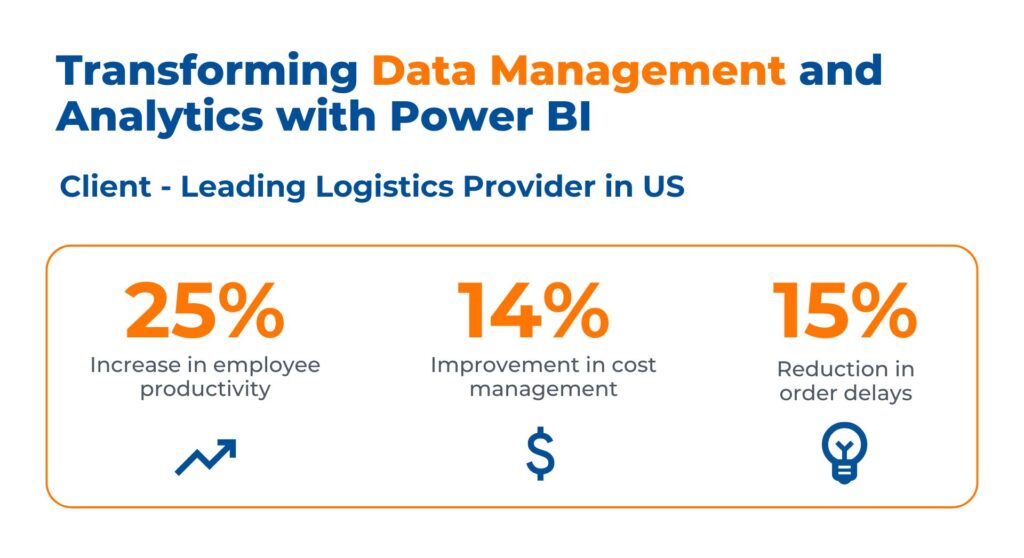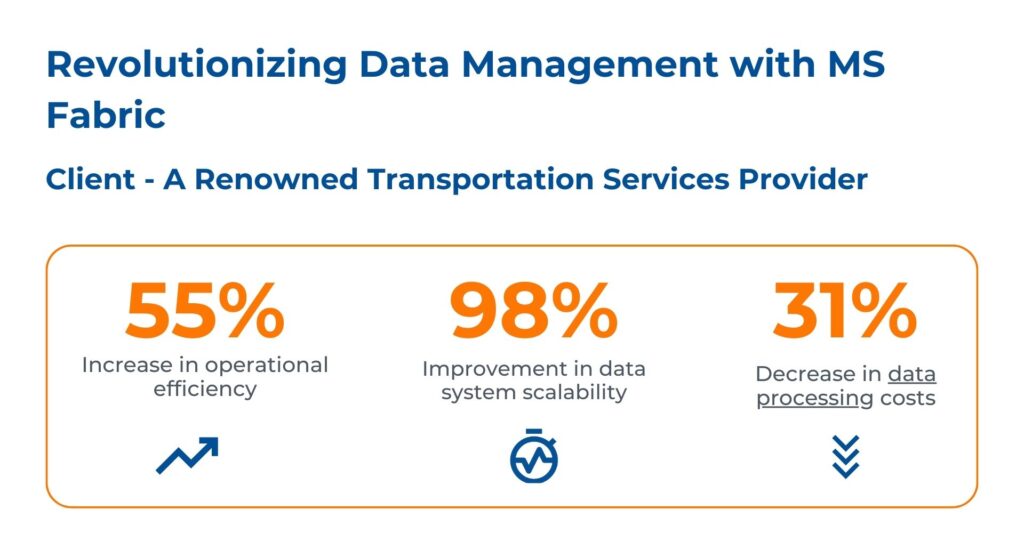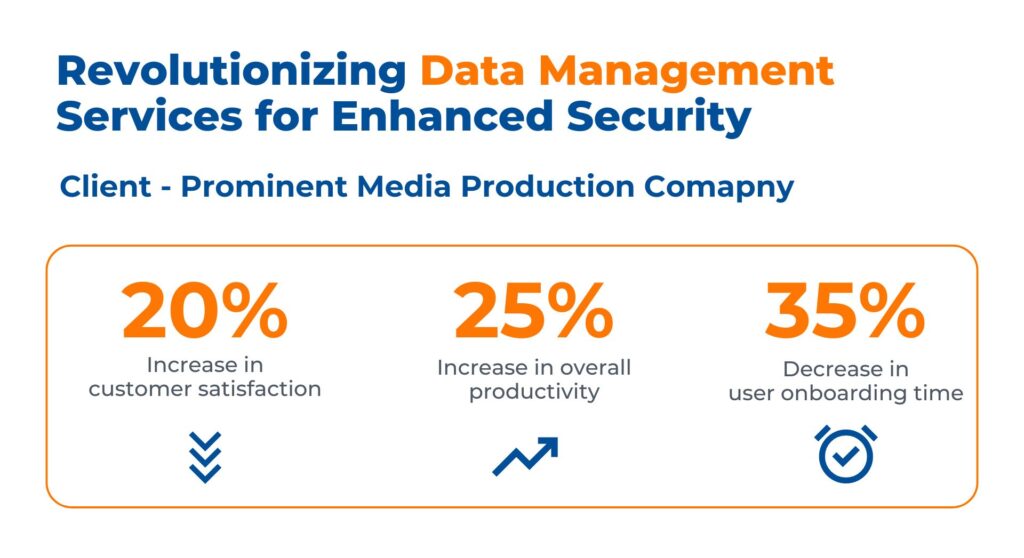During times where data breaches make headlines almost daily, how can organizations ensure their most valuable asset—data—remains both accessible and secure? According to IBM’s Cost of a Data Breach Report 2023, the global average cost of a data breach reached a staggering $4.45 million, a 15% increase over 3 years. This alarming statistic underscores the critical importance of staying ahead in data management trends, particularly in the realms of access and security.
As businesses navigate the digital landscape of 2024, the delicate balance between data accessibility and protection has never been more crucial. From AI-driven security measures to decentralized data architectures, the field of data management is evolving at a breakneck pace.
Whether you’re a CIO looking to fortify your data defenses or a data scientist seeking more efficient access methods, understanding these trends is essential for anyone involved in managing, analyzing, or protecting data. Let’s dive into the cutting-edge strategies that are defining the future of data management, with a focus on revolutionizing data access and security.
What is the Current State of Data Management?

1. The Data Explosion: Volume, Velocity, and Variety
Organizations today are grappling with an unprecedented surge in data. According to IDC’s Global DataSphere forecast, the amount of data created and replicated globally is expected to reach 181 zettabytes by 2025. This staggering growth isn’t just about volume; it’s characterized by the “Three Vs” – Volume, Velocity, and Variety.
Volume refers to the sheer amount of data being generated. From IoT devices and social media interactions to e-commerce transactions and scientific research, the sources of data are multiplying rapidly. Velocity describes the speed at which new data is being created and the need for real-time processing. Variety encompasses the diverse types of data – structured, semi-structured, and unstructured – that organizations must manage, including text, images, videos, and sensor data.
2. The Complexity Challenge: Integrating Diverse Data Sources
As data sources proliferate, organizations face the daunting task of integrating and making sense of this diverse information. Traditional data management systems, designed for structured data, are often ill-equipped to handle the complexity of today’s data landscape. This leads to data silos, where valuable information remains trapped and underutilized within different departments or systems.
The challenge extends beyond mere storage and integration. Organizations must ensure data quality, maintain data lineage, and provide seamless access to the right data at the right time. This complexity is further compounded by the need to comply with an ever-growing list of data protection regulations across different jurisdictions.
3. The Security Imperative: Protecting Data in a Threat-laden Environment
In an era where data breaches can cost millions and irreparably damage reputations, security has become paramount. Organizations must protect their data from increasingly sophisticated cyber threats while ensuring it remains accessible to authorized users. This balancing act between security and accessibility is one of the most pressing challenges in modern data management.
The rise of remote work and cloud-based services has expanded the attack surface, making traditional perimeter-based security measures insufficient. Organizations need to implement robust encryption, access controls, and monitoring systems while fostering a culture of security awareness among employees.

4. The Compliance Conundrum: Navigating a Complex Regulatory Landscape
Data management strategies must now account for a complex web of regulations such as GDPR, CCPA, and industry-specific requirements. These regulations impose strict rules on how data is collected, stored, processed, and deleted. Non-compliance can result in severe penalties and reputational damage.
Organizations are tasked with implementing data governance frameworks that ensure compliance while still allowing for data utilization and innovation. This often requires a delicate balance between legal requirements, ethical considerations, and business objectives.
5. The Need for Advanced Data Management Strategies
Given these challenges, traditional approaches to data management are no longer sufficient. Organizations need advanced strategies that can handle the volume, velocity, and variety of modern data while ensuring security, compliance, and accessibility. These strategies must be flexible enough to adapt to rapidly changing technology landscapes and business needs.
Advanced data management strategies often involve:
Top 10 Data Management Trends for 2024 and Beyond
In the recent past, many organizations’ sensitive data such as customer information, financial records, and proprietary algorithms were exposed on the dark web. In 2023 alone, over 4,100 publicly disclosed data breaches exposed more than 7 billion records worldwide, according to the Identity Theft Resource Center’s Annual Data Breach Report. Robust data management strategies are the need of the hour, and the following trends will help you in achieving your data management goals.
1. Artificial Intelligence and Machine Learning Integration
AI and ML are transforming data management by automating complex tasks and providing deeper insights. These technologies enable organizations to process vast amounts of data quickly, identify patterns, and make predictive analyses. The integration of AI and ML is becoming essential for competitive advantage in data-driven decision-making.
2. Cloud-based Data Management
Cloud solutions have become the backbone of modern data strategies, offering unparalleled scalability and flexibility. Organizations are increasingly adopting hybrid and multi-cloud approaches to optimize performance and costs. The cloud’s ability to facilitate global access and collaboration makes it an attractive option for businesses of all sizes.
- Scalable storage and processing capabilities
- Hybrid and multi-cloud strategies for flexibility
- Cost-effective solutions for businesses of all sizes
3. Data Governance and Compliance
With evolving data regulations like GDPR and CCPA, robust data governance frameworks are crucial. These frameworks ensure consistent data management and responsible use throughout an organization. Data ethics is becoming a key consideration, focusing on transparent and responsible data practices.
- Implementation of comprehensive data governance frameworks
- Ensuring compliance with global regulations (GDPR, CCPA, etc.)
- Emphasis on data ethics and responsible use
4. Data Security and Privacy
As cyber threats evolve, advanced security measures are becoming essential. Organizations are implementing sophisticated encryption techniques and adopting zero-trust security models. Privacy-enhancing technologies (PETs) are enabling data analysis while preserving individual privacy.
- Advanced encryption for data at rest and in transit
- Adoption of zero-trust security models
- Implementation of privacy-enhancing technologies (PETs)
5. Real-time Data Processing
The demand for immediate insights is driving the adoption of real-time data processing technologies. Stream processing and event-driven architectures allow organizations to act on data as it’s generated. Edge computing is crucial in reducing latency for time-sensitive applications.
- Stream processing and event-driven architectures
- Edge computing for immediate insights
- Applications in IoT and smart systems

6. Data Fabric and Data Mesh Architectures
These emerging architectural approaches aim to solve challenges in data integration and accessibility. Data fabric provides a unified architecture for data management across diverse sources, while data mesh takes a domain-oriented, decentralized approach. Both paradigms improve data accessibility and integration in complex environments.
- Distributed data management approaches
- Improved data accessibility and integration
- Domain-driven design in data architectures
7. DataOps and MLOps
These practices apply DevOps principles to data and machine learning workflows. They focus on automating data pipelines, improving collaboration, and ensuring reliable deployment of ML models. DataOps and MLOps enable faster, more reliable data and ML projects.
8. Data Quality Management
Ensuring data quality is crucial for reliable analytics and decision-making. Organizations are implementing automated tools for data profiling and cleansing, along with real-time monitoring of data health. These approaches help maintain data accuracy and reliability.
- Automated data profiling and cleansing
- Implementation of data observability and monitoring
- Focus on ensuring data accuracy and reliability
9. Self-Service Analytics
The trend towards self-service analytics is democratizing data access within organizations. By providing user-friendly tools, non-technical users can perform their own data analysis. This empowers employees across departments to make data-driven decisions.
- Empowerment of non-technical users
- Data democratization within organizations
- Balancing accessibility with governance
10. Metadata Management and Data Catalogs
As data environments grow more complex, effective metadata management becomes crucial. Data catalogs improve discoverability and understanding of data assets. Enhanced data lineage capabilities offer greater transparency into data origins and transformations.
- Improved data discovery and understanding
- Automated metadata generation and management
- Enhanced data lineage and impact analysis

How to Implement These Data Management Trends in Your Organization
The digital tightrope between data accessibility and security is at the heart of modern business operations. As we venture further into 2024, the landscape of data management is shifting dramatically, driven by technological advancements and evolving threat landscapes. Organizations are no longer thinking if they should update their data management strategies, but how quickly they can implement cutting-edge solutions to stay ahead of both competitors and cybercriminals. Below are some best practices:

1. Assessing Your Current Data Management Maturity
Assessing your organization’s current data management maturity is the crucial first step in implementing new trends. This process involves evaluating your existing data practices, technologies, and capabilities against industry standards and best practices.
- Conduct a comprehensive audit of your data infrastructure, policies, and processes
- Use established frameworks like the CMMI Data Management Maturity Model or DAMA-DMBOK
- Identify strengths, weaknesses, and gaps in your current data management practices
- Evaluate your organization’s data culture and staff capabilities
- Assess the alignment of your data management with business objectives
2. Prioritizing trends based on business needs
Not all trends will be equally relevant or beneficial to every organization. Prioritization should be based on your specific business needs, challenges, and strategic goals.
- Align potential data management improvements with your organization’s strategic objectives
- Consider the potential ROI of implementing each trend
- Assess the urgency of addressing specific data challenges in your organization
- Take into account your available resources, including budget and skilled personnel
- Consider regulatory requirements and compliance needs specific to your industry
- Evaluate the potential impact on customer experience and operational efficiency
3. Building a Roadmap for Adoption
Once you’ve assessed your maturity and prioritized trends, the next step is to create a detailed roadmap for adopting these new data management practices and technologies.
- Set clear, measurable goals for each stage of implementation
- Break down the adoption process into manageable phases or projects
- Identify key stakeholders and form cross-functional teams for implementation
- Allocate resources and budget for each phase of the roadmap
- Establish timelines and milestones for tracking progress
- Plan for necessary training and skill development among your staff
- Include change management strategies to ensure smooth adoption across the organization
- Build in regular review points to assess progress and adjust the roadmap as needed

Challenges and Considerations in Implementing Data Management Trends
Implementing cutting-edge data management trends is not without its challenges. Organizations must navigate various obstacles, from skill deficits to integration complexities, to successfully leverage new technologies and methodologies. Here’s a breakdown of key challenges and considerations:
Skills Gap and Training Requirements
Identifying Skill Deficiencies: As new technologies like AI, machine learning, and advanced data analytics become integral to data management, a significant challenge is the existing skills gap within organizations. Employees may lack the necessary expertise to effectively implement and manage these advanced systems.
Investing in Training and Development: To bridge this gap, organizations need to invest heavily in training programs. This includes not only technical training but also ongoing education to keep pace with rapidly evolving technologies. Creating partnerships with educational institutions and leveraging online learning platforms can also be part of the strategy to enhance employee skills.

Integration with Legacy Systems
Compatibility Issues: Many organizations operate on legacy systems that are not readily compatible with new technologies. Integrating advanced data management solutions with these older systems can be technically challenging and costly.
Strategic Integration Planning: To address this, a detailed analysis of the existing IT infrastructure is crucial. Solutions may include gradual integration strategies, using middleware to ensure compatibility, or in some cases, phased replacement of legacy systems. It’s important to balance the need for modernization with the practicalities of current system limitations.
Balancing Innovation with Stability
Risk of Disruption: Innovating too rapidly can lead to instability in critical systems. It’s essential to manage the pace of innovation to avoid disrupting business operations.
Implementing a Phased Approach: Organizations should consider a phased approach to implementing new data management trends. This allows for the testing of new technologies in controlled environments before full-scale deployment. It also helps in mitigating risks associated with system failures or data integrity issues.
Maintaining Operational Continuity: Continual monitoring and evaluation of new systems’ impact on business operations are crucial. This ensures that while the organization innovates, it also maintains the stability and reliability of its core functions.
The Impact of Automation on Data Management
Automation in data management is transforming how organizations collect, integrate, and govern their data. By implementing automated processes, businesses can streamline operations across various data management domains, from initial data entry and collection to data integration in diverse systems and ongoing data governance.
Data Collection: Automation tools enable the rapid and accurate collection of data from multiple sources, whether from IoT devices, online transactions, or customer interactions. This helps in gathering real-time data without manual intervention.
Data Integration: Automated integration tools help synchronize data across different systems and platforms. This not only speeds up the process but also reduces the errors typically associated with manual integration efforts.
Data Governance: Automation supports robust data governance by enforcing consistent policies and rules automatically. It can monitor compliance, manage data access, and even handle data quality issues without needing constant human oversight.
Benefits of Automation in Data Management
Cost Reduction: Automation significantly reduces the labor costs associated with manual data handling. By automating repetitive tasks, organizations can allocate their human resources to more strategic, high-value activities.
Efficiency Improvements: Automated systems operate continuously without the need for breaks or downtime, thus accelerating the data processing speed and enhancing overall productivity. Automation also reduces the time needed to prepare and report data, enabling faster decision-making.
Accuracy and Consistency: Automation minimizes human error, ensuring data is processed accurately. This consistency is crucial for compliance and reliability, especially in sectors like finance and healthcare where precision in data management is critical.

Success Stories of Kanerika’s Data Management Mastery
1. Transforming Data Management and Analytics with Power BI
Business Challenges
The client is a family-owned third-party logistics provider based in the Upper Midwestern United States, excels in services like order fulfillment and reverse logistics, extending to comprehensive warehousing and distribution solutions. They faced challenges with inefficiencies in its reporting and analytics, facing significant operations and supply chain management challenges due to a fragmented data infrastructure. Critical data was spread across diverse systems, including MS Dynamics ERP, SQL Server, Office 365, and third-party servers, leading to disjointed reporting and analytics capabilities that undermined decision-making processes.
Kanerika’s Solutions
- Streamlined disparate data sources into a unified platform, enhancing data accuracy and decision-making efficiency
- Deployed dynamic, real-time Power BI dashboards for instant operational adjustments and strategic actions
- Developed custom Power BI reports and dashboards, enhancing processes and performance with deep insights

2. Revolutionizing Data Management with MS Fabric
Business Challenges
The client is a world-class provider of top-quality domestic and international transportation and logistics services, renowned for delivering their customers the highest quality freight solutions and services. They faced a complex set of interconnected data management challenges that were severely impacting their business operations and decision-making capabilities. Their Azure Cloud-based data lake suffered from inefficient architecture, significantly hindering scalable data management and reducing operational agility. Compounding this issue, the client’s data models and table storage were poorly optimized, resulting in prolonged processing times and compromised data accuracy.
Kanerika’s Solutions
- Streamlined data processes by reviewing architecture and identifying automation opportunities
- Examined and optimized decision-making elements and data models, significantly reducing the overall cost of ownership
- Enhanced performance and scalability by addressing data gaps and improving security controls

3. Redefining Data Management Services for Enhanced Security and Operations
Business Challenges
The client is a prominent media production company operating in the global film, television, and streaming industry. They grappled with significant challenges from relying on outdated legacy systems. These legacy systems, no longer updated or maintained, presented compatibility issues with modern technologies vital to the company’s operations, hindering innovation.
Kanerika’s Solutions
- Implemented Informatica MFT and IICS for a modernized UX, seamless application integration (CRM & Data)
- Incorporated automation and third-party integrations for efficient file transfer monitoring, optimizing business operations
- Achieved enhanced data security, minimized manual effort, and improved cost efficiency with Informatica MFT and IICS

Kanerika: Delivering Reliable and Expert Data Management Solutions
Kanerika is renowned for its exceptional data management expertise, providing reliable and advanced solutions to tackle the complex data challenges faced by various reputed businesses across sectors. With a deep understanding of the nuances involved in data handling, we have consistently delivered top-class results by integrating cutting-edge technologies like AI and automation into its services.
Our approach focuses on transforming raw data into valuable insights through sophisticated algorithms and machine learning techniques, ensuring that every solution is tailored to the unique needs of each client. This bespoke service enables companies to harness the full potential of their data, optimizing operations and driving significant business growth.
Kanerika’s commitment to excellence is evident in our successful collaborations with industry leaders, where we have streamlined data processes, enhanced data security, and boosted analytical capabilities. By automating routine data tasks, we allow businesses to focus on strategic decision-making and innovation. Our AI-driven solutions not only predict trends but also adapt to evolving data landscapes, ensuring that businesses remain at the forefront of their industries.
Trust Kanerika to be your partner in navigating the complexities of data management, where our expertise meets your ambition to achieve remarkable outcomes.

Frequently Asked Questions
What are the leading trends in data management currently?
Top trends include the integration of AI and machine learning for enhanced analytics, increased adoption of cloud-based platforms for flexibility, the rise of data as a service (DaaS), and stronger focus on data privacy and security regulations.
What are the main categories of data management?
The four types include data storage, data operations, data security, and data governance. Each category plays a crucial role in the effective handling and protection of data within organizations.
What are the most effective data management strategies?
Effective strategies involve regular data audits, clear data governance policies, continuous data quality improvement processes, and integration of advanced technologies like AI to automate and optimize data processes.
What are the key steps in a data management process?
Key steps include identifying data needs, collecting data, ensuring data quality, storing and maintaining data securely, and analyzing data to derive insights and make informed decisions.
What are the advantages of managing data effectively?
Benefits include improved efficiency and decision-making, enhanced compliance and security, better customer insights, increased operational agility, and competitive advantage in the market.
What is the primary objective of data management?
The main goal of data management is to ensure that data is accurate, accessible, consistent, and protected, enabling organizations to make data-driven decisions effectively.
Why is having a data management plan crucial?
A data management plan is vital as it outlines procedures and strategies for handling data securely and efficiently, ensuring compliance with regulations and facilitating data-driven decision-making processes.